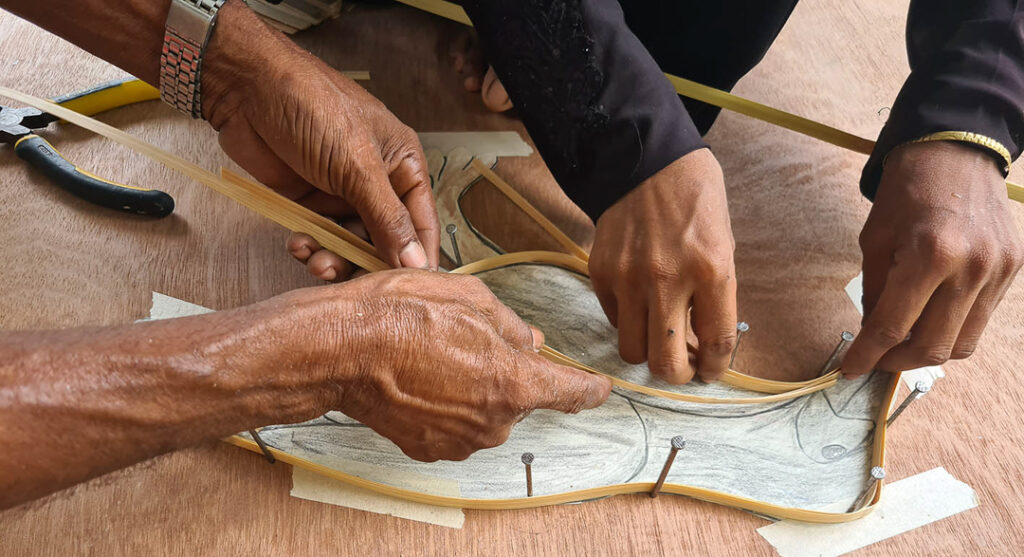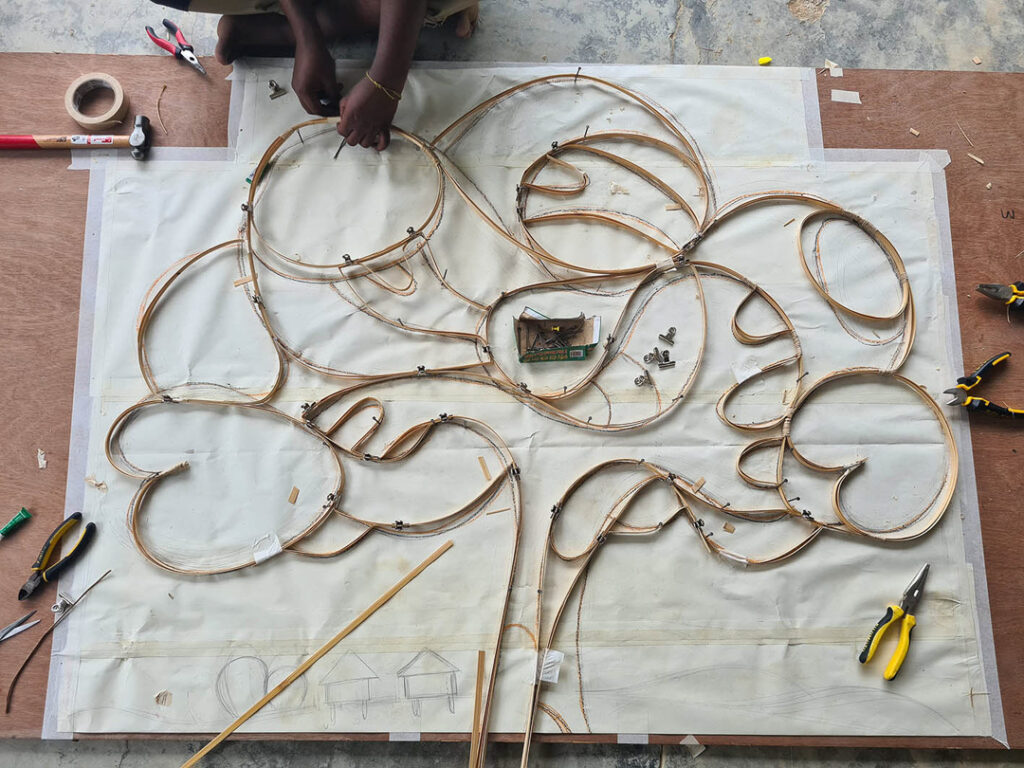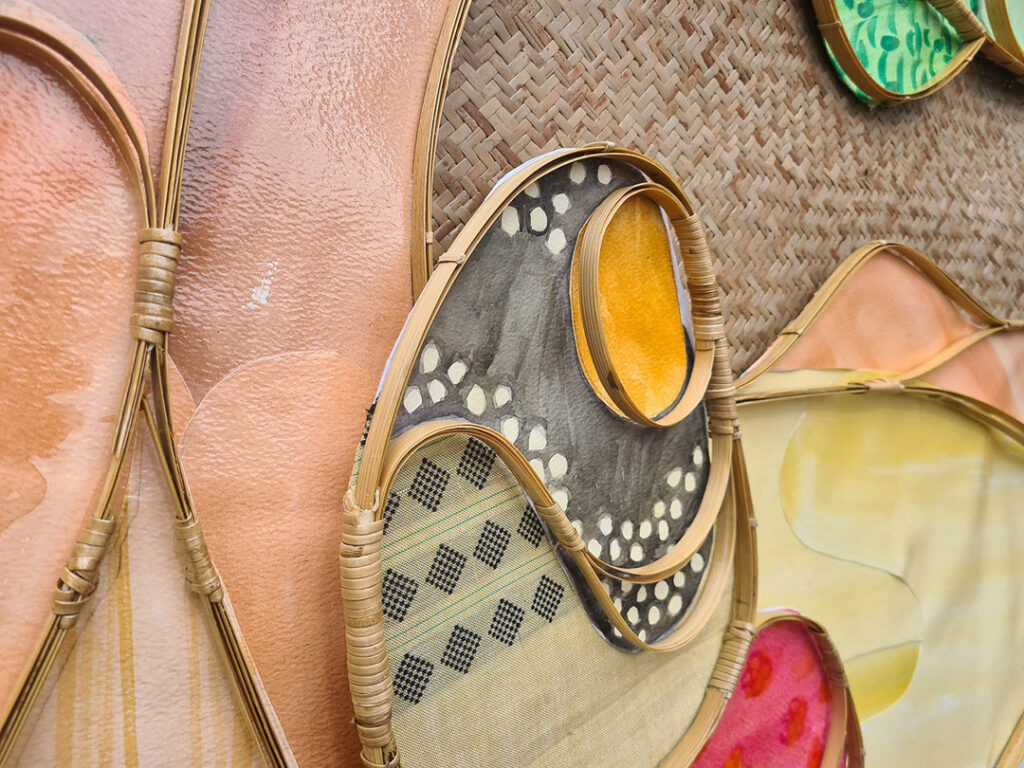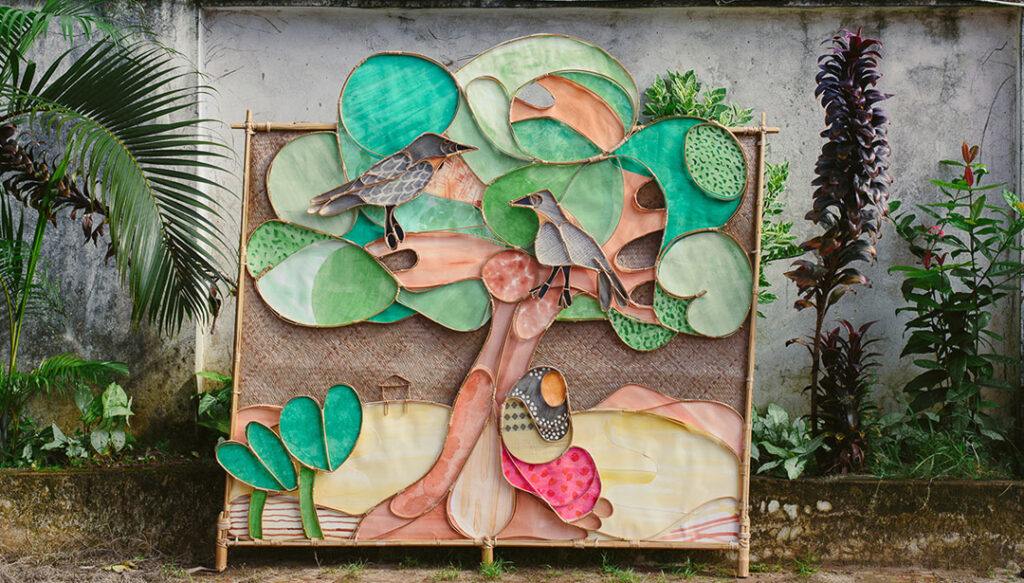
Tasman Munro and Arunn Jegan present a craft collaboration between Rohingya and Australian makers inside the Kutupalong refugee camp.
For Nuru Salam and Nurus Safar, their practice of weaving bamboo and cane goes back generations. They share memories of simpler times sitting in the shade of a large Banyan Tree in the Rakhine state of Myanmar, telling stories while their hands keep busy weaving baskets and farming tools. These are memories of rest, peace and joyful times with their community. The last six years have not been as simple, both Nuru Salam and Nurus Safar are now refugees living in Kutupalong along with one million other Rohingya people. They were forced to flee Myanmar after successive bouts of state-sponsored violence, the largest of which occurred in 2017, culminating in over 700,000 Rohingya fleeing to Bangladesh. In this predicament of forced displacement and the uncertain future of living in the world’s largest refugee camps, their weaving practice offers solace of familiarity and a vehicle to keep their denied culture alive.
“In the camps we started to do this because if we don’t, our generation will forget our Rohingya culture. We would be happy if children can learn from us as well. We can teach Rohingya so that we can keep alive our culture. First, we ourselves know the practice, then we can help other people to learn and know. Then when we pass away at least the practice will remain, and they can share and can teach others.” – Nuru Salam and Nurus Safar
To mark six years since their community’s displacement, Nuru Salam and Nurus Safar partnered with Australian makers Tasman Munro (Social Designer) and Arunn Jegan (maker and head of mission at Médecins Sans Frontières) to co-design a new practice they called “caned glass”. Together they used this practice to weave a large story panel to hang in MSF hospitals in Kutupalong.
While studying photos of the camp Tasman saw the work of Nuru Salam and Nurus Safar, and was struck by the way they used bamboo weaving to celebrate Rohingya culture. He explored ways their practice could be used to illustrate stories and involve children in the process, and inspired by stained glass windows, Tasman wondered if the bamboo strips could be bent into forms to create a 2D story panel. He and Arunn started testing in Australia and sent photos to Kutupalong via WhatsApp and within days the weavers returned photos of their own prototype. This began the exchange of developing the cane glass technique together. The panel they created depicts a Rohingya Kyssa (folktale) that was chosen by children living in Kutupalong. The children were invited to a Kyssa gathering (a Rohingya storytelling practice) and were then asked which story they would like to share with the families in hospital to mark six years since the mass exodus. They chose a Kyssa about two crows, one from the city and the other from the country, who meet in the same tree and work together to help each other survive. The story is about our common humanity and the importance of being clever and united in difficult times like the current food shortages in the camp. The group spent the day creating drawings of the story which were brought together into a final design.
This is where the “cane glass” technique began. The process starts with splitting bamboo into strips with a machete. Each strip is then planed with a blade and sanded to accuracy only skilled hands can achieve. The bamboo strips are then turned on their side, layered up and bent into curved forms which are bound together with thinner strips of cane, this creates frames that are filled with colourful paper panels. Here the panels were painted with watercolours by the Rohingya children and makers, some sections were filled with fabric from Myanmar and a woven mat that forms the sky.
The piece is held together by tension and binding, rather than structural weaving commonly used in basketry. Each curve is deliberately placed to ensure it pulls or pushes against the entirety of the piece, working together to hold everything in place. The collaboration between the local and visiting makers was the core focus of this project. The work was commissioned by Médecins Sans Frontières as a way to explore creative advocacy, an approach that partners with communities to co-lead advocacy and uses creative practice to create and tell stories in engaging and impactful ways.
“The Rohingya situation is often described as the “forgotten crisis”, we need to keep bringing people’s attention back to this community. Creative advocacy does not take away from our engagements with decision-makers, but aims to raise awareness in ways we haven’t tried before” – Arunn Jegan
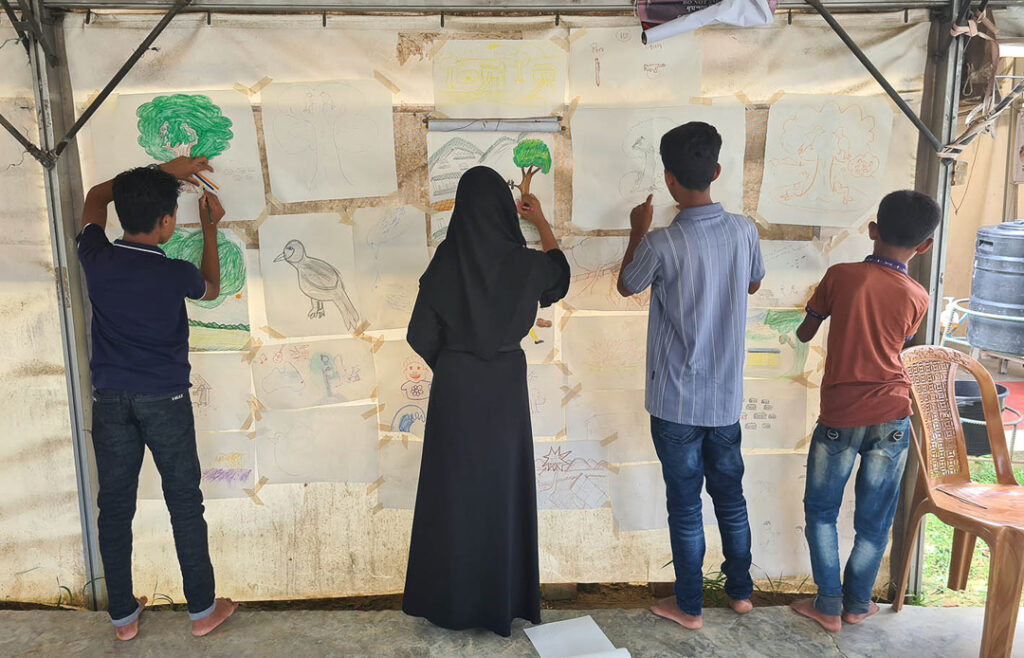
“Our focus is sharing stories that support the international community to understand Rohingya people beyond the problems they experience, to connect with them, to care, this aims to drive systems change on a deeper level. Through the process of co-design and collaborative making we also aim to create an experience that affirms culture and models what partnerships can look like between affected communities and supporting NGOs” – Tasman Munro
“We learn from you and the things you don’t know we teach you. We brothers teach each other” – Nuru Salam
“Stateless” would be the first word most people associate with Rohingya people, this is an imposed label that contributes to their erasure.
“To say the Rohingya are stateless is subjugating them to a future they were forced into and it disregards their contribution to the world as an Indigenous people”, says Arunn Jegan. “The Rohingya practice their culture every day, by existing, by telling stories, through their rich mastery of craft.”
In the work there is also a picture of a Taro leaf, which references the Rohingya proverb “Kosefator Pani”, meaning “water leaves no trace on a Taro leaf”. The Rohingya use this to describe their plight: their existence in Myanmar is being erased. No matter where they live they are not allowed to leave a trace on this earth. The exciting cane glass practice, developed in the camps, aims to challenge this in a small way, it supports the Rohingya community to make a mark, to celebrate their rich culture, skill and contribution to creative practice while acknowledging their continued survival in the face of sustained systemic oppression.
During the month of August, the story panel was placed inside hospitals run by Médecins Sans Frontières in the camp and activated through storytelling events for families in care.
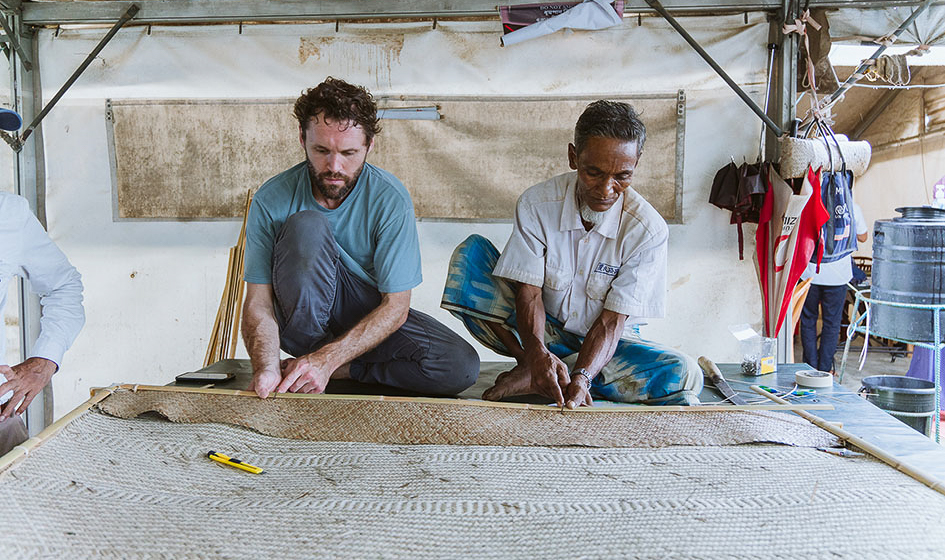
Tasman Munro is a Social Designer with an interest in community storytelling and collaborative making, Arunn Jegan is a maker and Humanitarian Affairs Lead at Medecins Sans Frontieres, they are part of the Creative Advocacy Partnership. Find out more here. Follow @tasmanmunrodesign and @arunn_jegan

